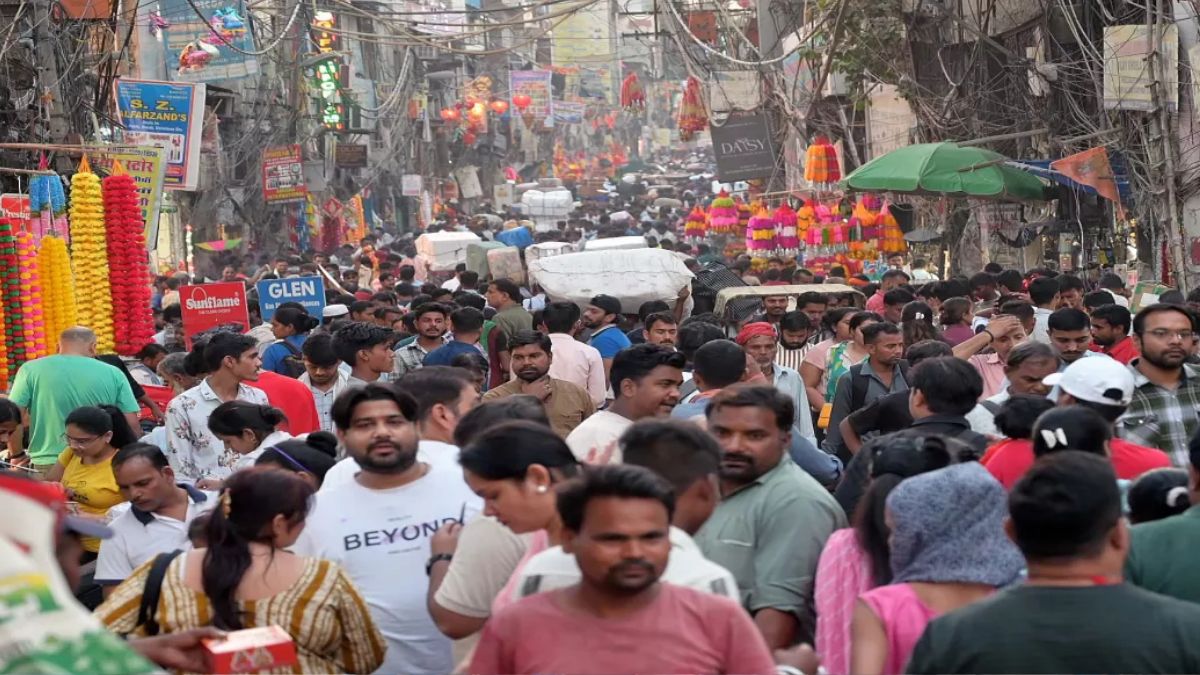Diwali shopping in Delhi’s bustling markets is creating a chaotic scene, with massive crowds overwhelming infrastructure and posing safety risks. Reports from Sadar Bazar, one of Asia’s largest markets, highlight the severity of the situation. While increased police and paramilitary presence has been deployed to manage the crowds, the sheer volume of shoppers, coupled with persistent encroachment by street vendors, is proving challenging to control, even resulting in near-stampede conditions. This necessitates a more comprehensive and sustained approach to crowd management during peak seasons like Diwali. The interplay of security measures, vendor regulations, and infrastructure limitations all contribute to this complex issue and will require a multifaceted strategy to mitigate.
Challenges of Crowd Management During Diwali in Delhi
The Sadar Bazar Crisis
The recent events in Sadar Bazar serve as a stark example of the difficulties faced during peak shopping seasons. Despite the deployment of 100 additional police personnel and paramilitary forces, a viral video depicted a near-stampede situation due to overcrowding. Even after police intervention to remove street vendors and encroachers, the problem quickly recurs, highlighting the need for more sustainable solutions. The Federation of Sadar Bazar Traders Association (Festa) has voiced their concerns, emphasizing the inadequacy of the current security measures and urging for a greater police and paramilitary presence to effectively control the crowds. Their calls for improved infrastructure and sustained crowd management are crucial for ensuring safety and preventing future incidents.
Infrastructure Limitations and Vendor Encroachment
The limited infrastructure within many of Delhi’s markets contributes significantly to the overcrowding problem. Narrow streets, lack of designated pedestrian zones, and insufficient space for both shoppers and vendors exacerbate the situation. The persistent encroachment by street vendors further constricts available space, making navigation difficult and increasing the risk of accidents or stampedes. Addressing this issue requires a collaborative effort, including improved urban planning to accommodate the large influx of people during festivals, clear regulations concerning vendor placement, and a strong enforcement mechanism to prevent and mitigate encroachments.
Solutions for Improved Crowd Control and Safety
Increased Security and Coordinated Efforts
While deploying more police and paramilitary forces is a necessary step, it is not sufficient on its own. A coordinated approach is essential, involving collaboration between Delhi Police, the Municipal Corporation of Delhi (MCD), traffic police, and other relevant agencies. This collaborative approach should focus on implementing and enforcing consistent regulations concerning vendor placement, ensuring adequate pedestrian space, and managing traffic flow effectively. Regular assessments of crowd density and timely adjustments to security deployment are also necessary to adapt to fluctuating crowds throughout the festival season.
Infrastructure Improvements and Urban Planning
Long-term solutions necessitate improvements to the infrastructure of Delhi’s markets. This includes widening streets, creating designated pedestrian walkways, and establishing better traffic management systems. Proper urban planning that considers peak festival crowds should be prioritized. Such planning might include measures such as constructing temporary pedestrian bridges or developing alternative shopping areas to disperse crowds more effectively and minimize congestion at central locations. Improved signage, clear walkways and public announcement systems also contribute to better crowd navigation and communication during periods of peak shopping activity.
The Long-Term Perspective for Safe Diwali Shopping
The chaos and safety risks associated with Diwali shopping highlight the urgent need for a sustained, multifaceted strategy. Focusing on improved crowd management, collaborative efforts between various agencies, and sustainable infrastructural development are paramount. By addressing both immediate and long-term challenges, Delhi can create a safer and more enjoyable shopping experience for its citizens during Diwali and other peak seasons. While temporary solutions can address the immediate issues of overcrowding and safety, lasting improvements will require sustained commitment from the authorities and a concerted effort towards a holistic approach for better crowd management, improved infrastructure and urban planning in its markets.
Takeaway Points:
- Delhi’s markets face severe overcrowding during Diwali, leading to safety concerns.
- Increased police and paramilitary presence is insufficient without addressing root causes.
- A collaborative effort involving various agencies is crucial for improved crowd management.
- Infrastructure improvements and better urban planning are long-term solutions.
- A multifaceted strategy addressing both short-term and long-term issues is essential for a safer Diwali shopping experience.




